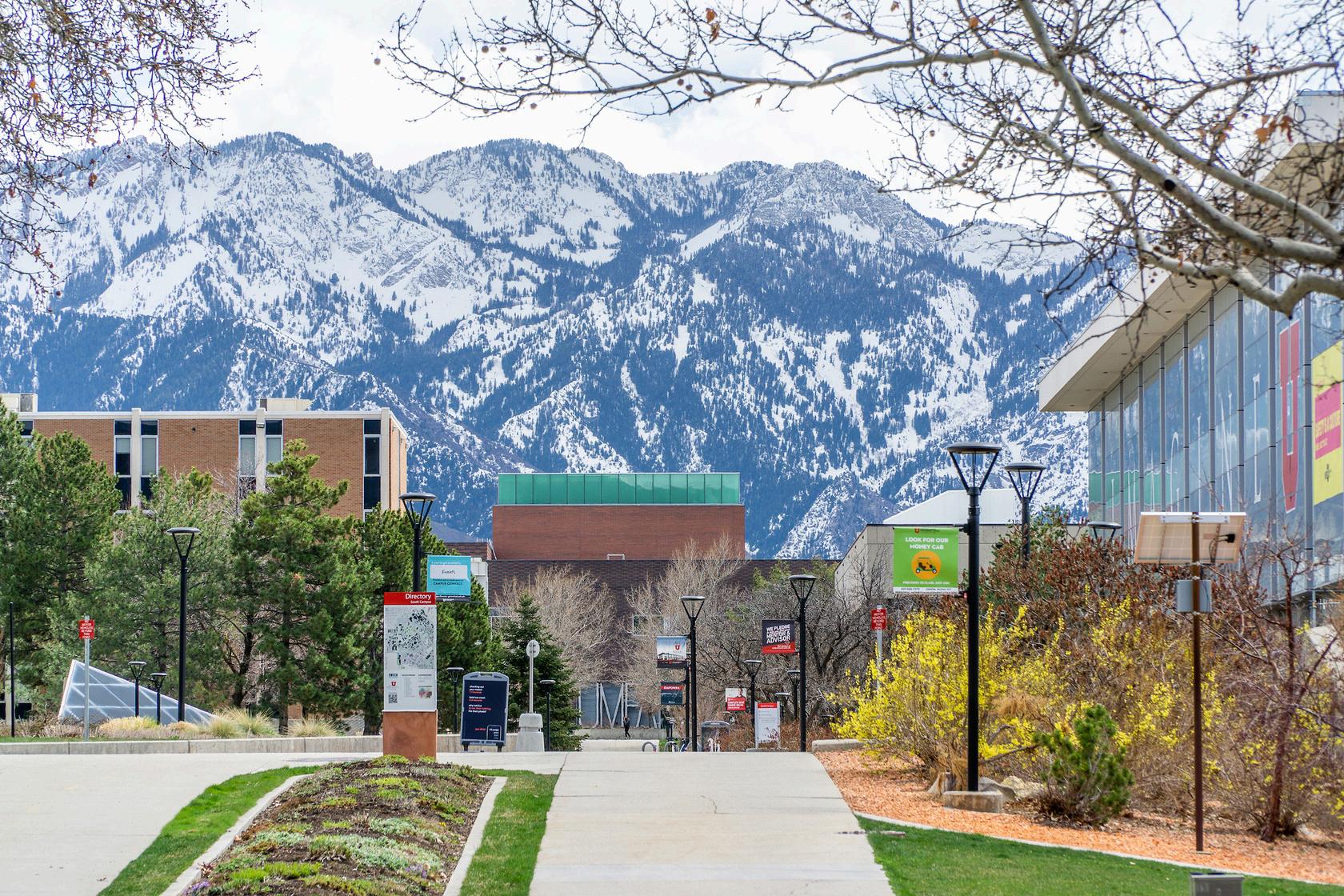

FALL 2024

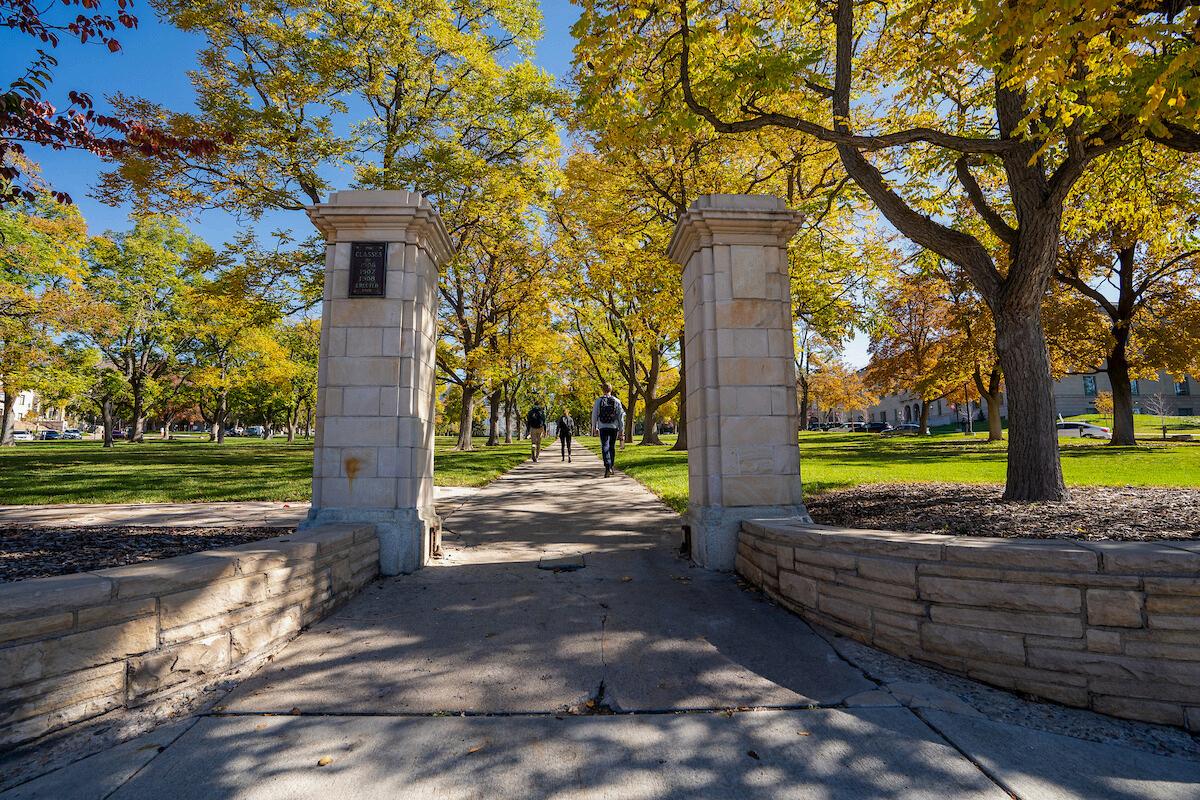
Joint Technical Joint Technical Conference on Energy Conference on Energy Geosciences and the Geosciences and the Energy Transition Energy Transition
Message from Message from the Director, the Director, Milind Deo, Ph.D. Milind Deo, Ph.D.
EGI & University of Houston
EGI & University of Houston

Unearthing New Unearthing New Opportunities Opportunities
Mine Waste Mine Waste Characterization in Characterization in Utah’s Greater Tintic Utah’s Greater Tintic Mining Area under the Mining Area under the Earth MRI Program Earth MRI Program

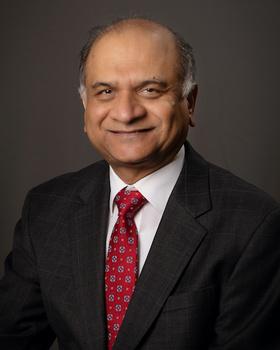
FALL 2024 EGI MESSAGE FROM THE DIRECTOR
Dr. Milind Deo, EGI Director and Peter D. and Catherine R. Meldrum Professor of Chemical Engineering
Inmeetingsandconferencesonenergyworldwide,the importanceofprovidingadequateandreliableenergy forallpopulationsisfrequentlyemphasized. Simultaneously,thereisanurgentneedtoaggressively pursuelow-carbon,cleanenergysolutions.EGI continuestomakestridesinresearchacrossallaspects ofenergytosupportthesegoals
TheFrontierObservatoryforResearchinGeothermal Energy(FORGE)hasrecentlycompletedasuccessful circulationtestbetweenitsinjectionandproduction wells.EGIiscollaboratingwithindustrialpartnerson newEnhancedGeothermalSystems(EGS)projects aimedatachievingdecarbonizationthrough geothermalenergy BuildingonEGI’slongstanding expertiseingeothermalenergy,wehavelauncheda GeothermalConsortiumtopartnerwithindustryand furtheradvancegeothermaltechnologiesacrossall temperatureranges.
TheEnergyEfficiencyandRenewablesgroup,ledbyDr. KodyPowell,hassuccessfullysecuredmultiplenew awards,coveringtopicssuchasairquality,emissions control,andworkforcedevelopment Inadditionto advancingscientificbreakthroughs,theseprojectswill haveasignificantimpactonlocalcommunities.
AnewDepartmentofEnergyaward(ledbyDr.Ting Xiao)focusedonbasin-scalecarbontransportand storageplacesEGIattheforefrontofpractical solutionsforidentifyingcarbondioxidesources, capturingemissions,characterizingsubsurface storagesites,anddesigningeffectivestorage solutions
Dr.BryonyRichardsispioneeringhyperspectralimage analysismethodstolocatecriticalmineralsinmine tailingsandidentifypotentialnaturalhydrogen sources.Thishydrogenresearchisbeingintegrated intoEGI’sNaturalHydrogenPlatform.
EGIcontinuestostrengthenpartnershipswithfaculty acrossmultipledepartmentsattheUniversityofUtah, aswellaswithotherstrategicpartners Our2024 AnnualMeetingwillbeheldincollaborationwiththe UniversityofHouston,inHouston,onOctober24. Pleasevisitourwebsitetoregisterfortheevent.
Wehighlyvalueyourpartnershipsandareeagerto collaboratewithyoutoaddresssomeofthemost criticalenergychallengesweface.

UNIVERSITY
OF UTAH & UNIVERSITY OF UTAH & UNIVERSITY OF HOUSTON UNIVERSITY OF HOUSTON

DATE: OCTOBER 24, 2024
LOCATION: UNIVERSITY OF HOUSTON HOTEL
The 2024 Joint Technical Conference hosted by the University of Houston and the University of Utah's Energy & Geoscience Institute will delve into the latest research and developments in oil and gas, carbon management, hydrogen, renewable energy integration, andgeothermalenergy.
The conference aims to bridge the gap between academia and industry, showcasing how innovative research can drive practical solutions and advancements.Attendeeswillgainvaluableinsightsinto how these emerging technologies and methodologies can enhance operational efficiency, reduce environmental impact, and create new opportunities in theenergysector.
This is an opportunity for industry professionals to connect with leading researchers, exchange ideas, explorecollaborativeeffortsthatcanpropeltheenergy industryforward.
Registerhere:eventbrite.com
HiltonUniversityofHoustoninfoandlocation: hilton.com/en/hotels
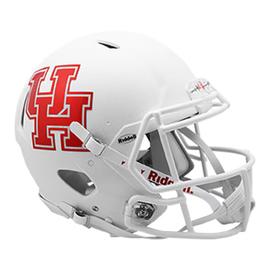

Aftertheconference,watchthefootballgame!
UniversityofUtahatUniversityofHouston Saturday,October26.

UNIVERSITY OF UTAH & UNIVERSITY OF HOUSTON
CONFERENCE AGENDA
OCTOBER 24, 2024 |
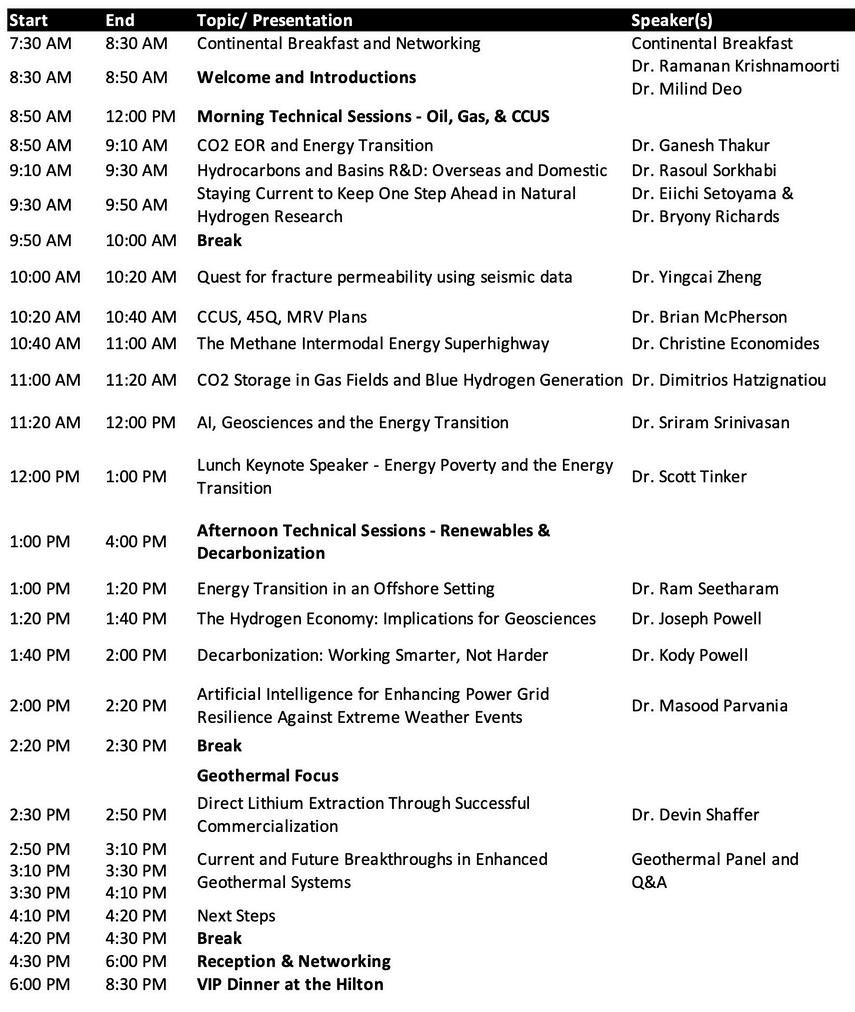
UNEARTHING NEW OPPORTUNITIES: MINE WASTE CHARACTERIZATION IN UTAH’S GREATER TINTIC MINING AREA UNDER THE EARTH MRI PROGRAM
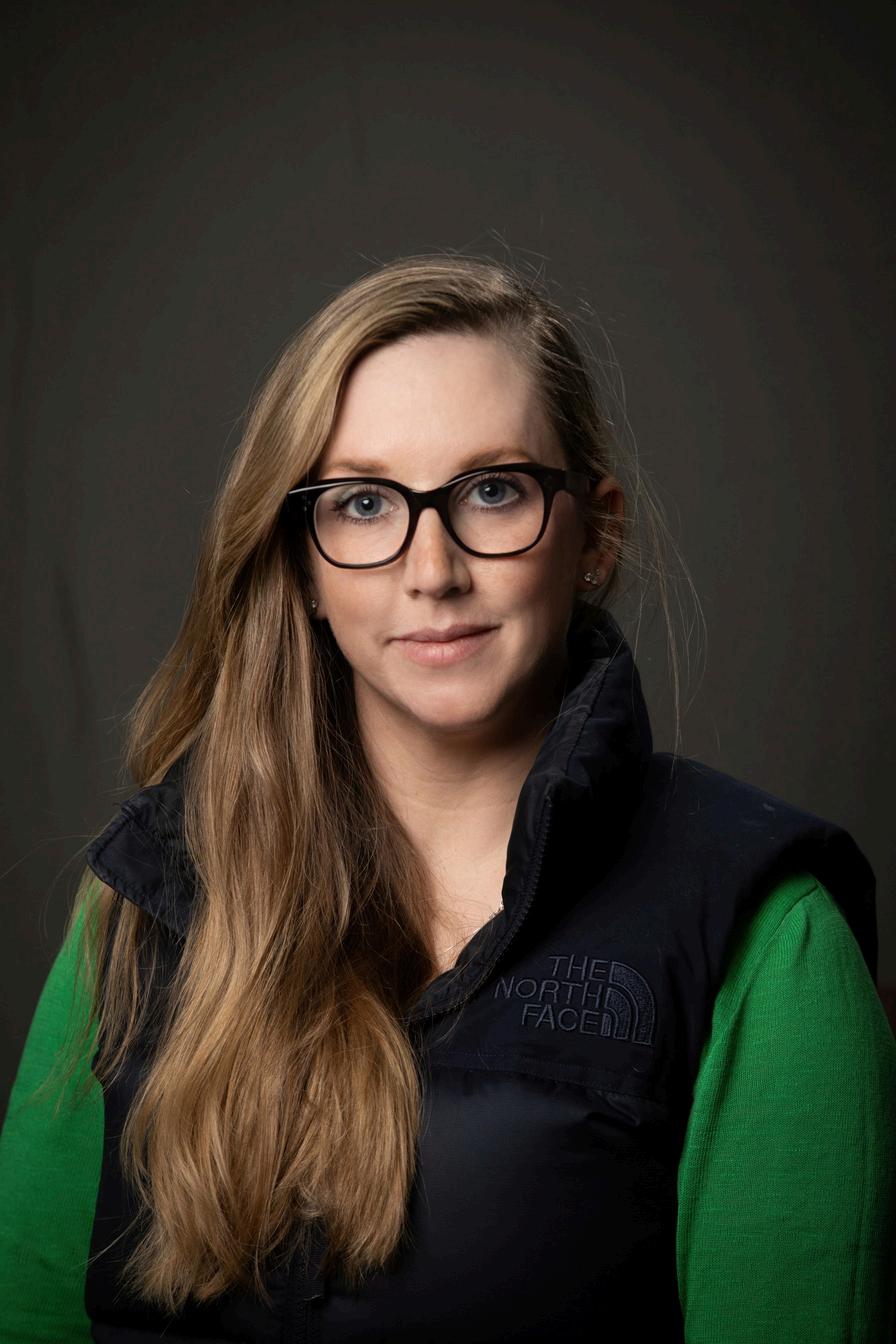
Dr. Bryony Richards
EGIResearchScientistDr. BryonyRichardsalongwith SeniorGeologistDr. StephanieMillsfromthe UtahGeologicalSurvey (UGS)wererecently awardedthechanceto embarkonavitalprojectto carryoutminewaste characterizationinthe GreaterTinticMiningarea.
The Tintic District is Utah’s second most productive mining region, surpassed only by the Bingham district, operatedownedRioTinto.DrBryonyRichardswillactas thescientificleadoftheproject,withDr.StephanieMills of the UGS, the project Principal Investigator (PI) In additiontoBryonyandStephanie,multiplestudentsand technical staff from the University of Utah and UGS will beinvolvedintheproject
This initiative, which targets the East Tintic, Main Tintic, and North Tintic mining districts, is a significant step forwardinunderstandingandharnessingthepotentialof minewasteforcriticalmineralresources.Theprojectfalls under the USGS Earth Mapping Resources Initiative (EarthMRI), The goal of Earth MRI is to improve our knowledgeofthegeologicframeworkintheUnitedStates and to identify areas that may have the potential to contain undiscovered critical mineral resources. Enhancement of our domestic mineral supply will decrease the Nation’s reliance on foreign sources of minerals that are fundamental to our security and economy.
Mining in the Greater Tintic area dates to 1869, with activity peaking in the early 20th century. The area has historically produced substantial amounts of copper, gold,silver,lead,zinc,andothervaluableminerals.While large-scaleproductiondwindledbythelate20thcentury, the Trixie gold mine resumed operations in 2021, signaling a resurgence of interest in the region's mineral wealth
Givenitsrichmininghistory,theGreaterTinticareaisnot onlyarepositoryofvaluablemetalsbutalsoaregionwith significant mine waste. This waste, now viewed as a byproduct, may hold untapped resources crucial for moderntechnologicalapplications.TheEGIandtheUGS aim to explore this potential by starting their investigationattheBurginmilltailings,wheresignificant zinc and manganese deposits have been identified. Additionalsites,includingtheMammothmilltailingsand historicheapleachareasatNorthLilyandSwansea,have beenprioritizedforfurtherstudy
Continued on page 6
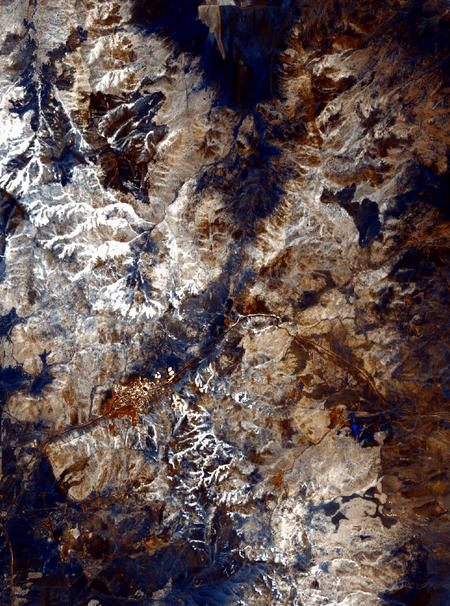
Figure 1 Overview of the Tintic Mining District using Sentinel-2 imagery. ASKEGI FALL 2024
Theproposal’sapproachiscomprehensive.Theprojectwill employ surface composite sampling, subsurface sampling usinghandaugersorexistingdrillholes,UAVlidarsurveys for detailed geomorphological mapping, and multi-scale hyperspectralanalysisforprecisemineralcharacterization These techniques will not only quantify the volumes of mine waste but also provide critical insights into the mineralogicalandgeochemicalcompositionofthetailings. Thisdataisessentialforassessingtheeconomicviabilityof extractingcriticalmineralsfromthesesites.
Theoutcomesofthisprojectarehopedtobefar-reaching. All mine waste sites within the Greater Tintic area will be cataloged into a mine waste database, which will be accessible to the public. The UGS will publish a comprehensive report detailing the volumetric, mineralogy,andgeochemicalfindings,alongwithacritical mineral resource estimate. Accompanying this report will be a GIS database that includes sampling locations, geochemicalresults,andUAVsurveydata Theseresources will support future environmental studies, inform mine waste remediation efforts, and provide a foundation for economicdevelopmentcenteredonthesustainableuseof minewaste.
This project aligns with key federal and state priorities, including the acceleration of renewable energy development, environmental justice, and the responsible development of critical minerals. By characterizing the mine waste in the Greater Tintic area, EGI and the UGS is not only addressing environmental concerns but also pavingthewayforeconomicrevitalizationinaregionwith a storied mining past and a promising future. The collaboration with local industry partners, combined with the region's accessible infrastructure, enhances the potential for this project to yield impactful results that benefit local communities, the environment, and the economyalike
AstheEGI-UGSpartnership,ledbyDr StephanieMillsand Dr. Richards, progresses with this groundbreaking work, the data and insights generated will play a critical role in shaping the future of mining and mineral resource managementinUtah,ensuringthatthelegacyoftheTintic districtcontinuestocontributetothestate’sprosperityin innovativeandsustainableways.
Moreinformation: EarthMappingInitiative(EarthMRI): wwwusgsgov/earth-mapping-resourcesinitiative-earth-mri
UtahGeologicalSurvey(UGS): geology.utah.gov
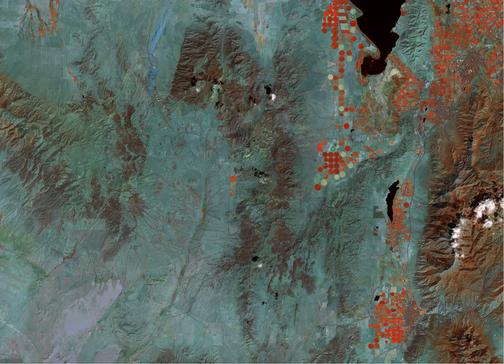
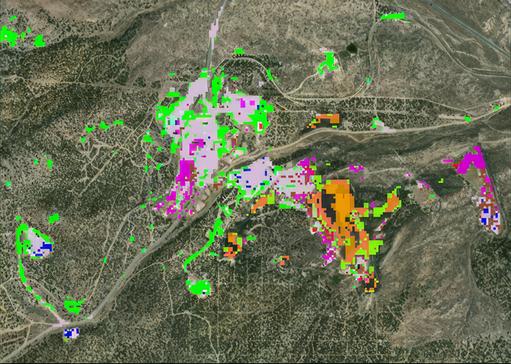
Figure 2 Overview of the Tintic Mining District using Landsat-8 imagery
Figure 3 Initial Sentinel-2 geological mapping of tailings at the Burgin Mine.
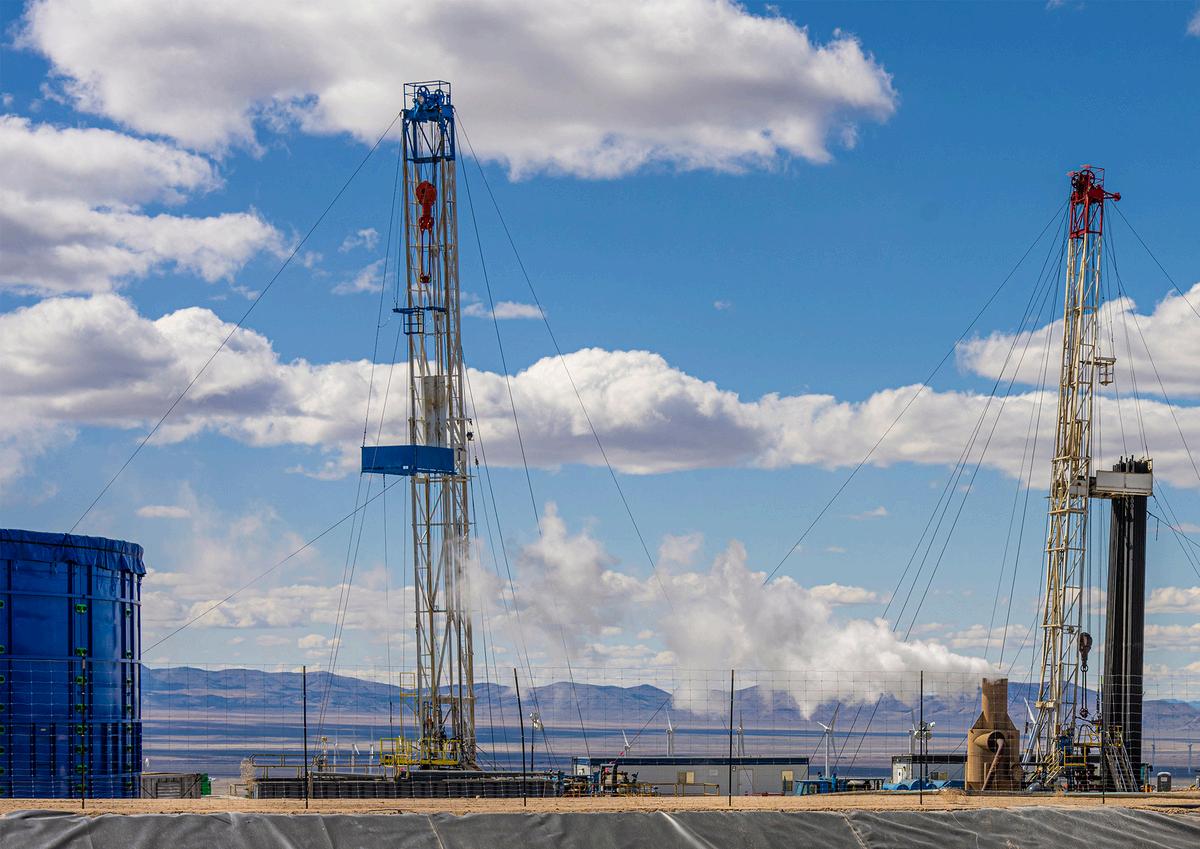
UTAH FORGE SUCCESSFULLY COMPLETES STIMULATION AND CIRCULATION TESTS – ESTABLISHING EFFECTIVE COMMUNICATION
Last May, The Utah Frontier Observatory for Research in Geothermal Energy (FORGE) at the UniversityofUtahhassuccessfullystimulatedwells 16A(78)-32(injection)and16B(78)-32(production).A 9-hour circulation test that followed stimulation proved fluid flow and energy transfer from an Enhanced Geothermal Systems (EGS) reservoir in hot dry granite – a major breakthrough for the industry.
“Thesestimulationsandtheshort-termcirculation testaretheculminationofmorethantwoyearsof planning and in-depth data analysis,” stated Professor John McLennan who oversaw the activities. “Enfranchising the knowledge gained from previous activities, and with advice from a diverse team of specialists from industry and academia, the Utah FORGE team was able to achieve outstanding results. Importantly, the maximum induced seismicity was magnitude 1.9, falling well short of the threshold of felt seismicity.”
UtahFORGE site in Milford, Utah
In 2020, the injection well was drilled to a true verticaldepthof8,559feetandameasureddepthof 10,897 feet. Two years later, this well was hydraulicallyfracturedinthreeintervalstowardsthe toe. State-of-the-art seismic monitoring mapped these fracture networks. The production well was subsequently drilled in 2023. The two wells are parallel with lateral sections at 65 degrees to the vertical and spaced apart vertically by 300 feet. Immediately following the drilling of 16B(78)-32, a brief circulation test revealed some connectivity betweenthetwowells.
Beginning on April 3, 2024, commercial-scale stimulationwasconductedonbothwellstodevelop interwell connectivity Over two weeks, well 16A(78)-32 was hydraulically fractured in eight different stages. The three intervals previously stimulated were re-fractured and seven new intervals were perforated and hydraulically fractured. Four stages of the production well were then injected. Overall, 118,000 barrels (4,956,000 gallons)ofwaterwereusedfortheexperiment.This non-potable injected water was produced from a shallowwellontheUtahFORGEsite.
Tolocatefracturesintersectingwell16B(78)-32,fiber optic cables were monitored during the stimulation ofitssisterwell,16A(78)-32.Therecordedfiberoptic signatures highlighted intervals of fracture intersection or proximity These intervals were selectedandperforatedforsubsequentstimulation Stimulatingbothwellsensuredconnectivity
“We are thrilled to see these remarkable achievements at FORGE, and the promise this geothermalbreakthroughholdsforourcleanenergy future,” said Jeff Marootian, Principal Deputy Assistant Secretary for Energy Efficiency and Renewable Energy. “The ability to tap more of the Earth’s natural heat through enhanced geothermal systems will expand access to affordable, secure, andresilientcleanenergyforeveryone.”
Following the stimulation, a short circulation test was conducted. Water was injected into well 16A(78)-32 for nine hours at rates up to 15 barrelsper-minute(630gallons-per-minute)
The injection led to corresponding production from well 16B(78)-32 of up to 8 bpm (344 gpm). Significantly,thisisanefficiencyrateofaround70% recovery.Thisreconfirmsthatconductivitybetween the wells was established. The temperatures of the outflow water also continually increased to approximately 139° C (282° F). Microseismic events, fiber optics data, and spinner logging showed that multiple independent flow paths had been created. Duringthestimulationuseofproppant,customfrac plugs, multiple clusters per stage, and different treatingfluidswereevaluated.
The short circulation test capped this phase of experimentation Hot water was produced and the testing confirmed the potential of EGS energy production These exciting results and the rich sets of data are being analyzed to plan additional fieldwork, including a 30-day circulation test scheduledforJuly2024.Allofthedatacollectedare publicly available on the Geothermal Data Repository(GDR).
“We are excited to have had such great success during our most recent stimulation and circulation testing,” said Professor Joseph Moore, Managing Principal Investigator of the Utah FORGE project. “Each test brings us closer to realizing the full potential of Enhanced Geothermal Systems and the important role it will play in the world’s energy portfolio”
The work undertaken by Utah FORGE shares a goal of de-risking the tools and technologies needed to make commercial-scale EGS affordable and accessibleanywhereintheworld.
Utah FORGE is a dedicated underground field laboratory sponsored by the U S Department of Energy’s Geothermal Technologies Office The site is located near the town of Milford in Beaver County, Utah, on the western flank of the Mineral Mountains. Utah FORGE is working on advancing the technologies and de-risking the tools needed to establish Enhanced Geothermal System (EGS) reservoirs. For more information, please visit our website at utahforge.com.
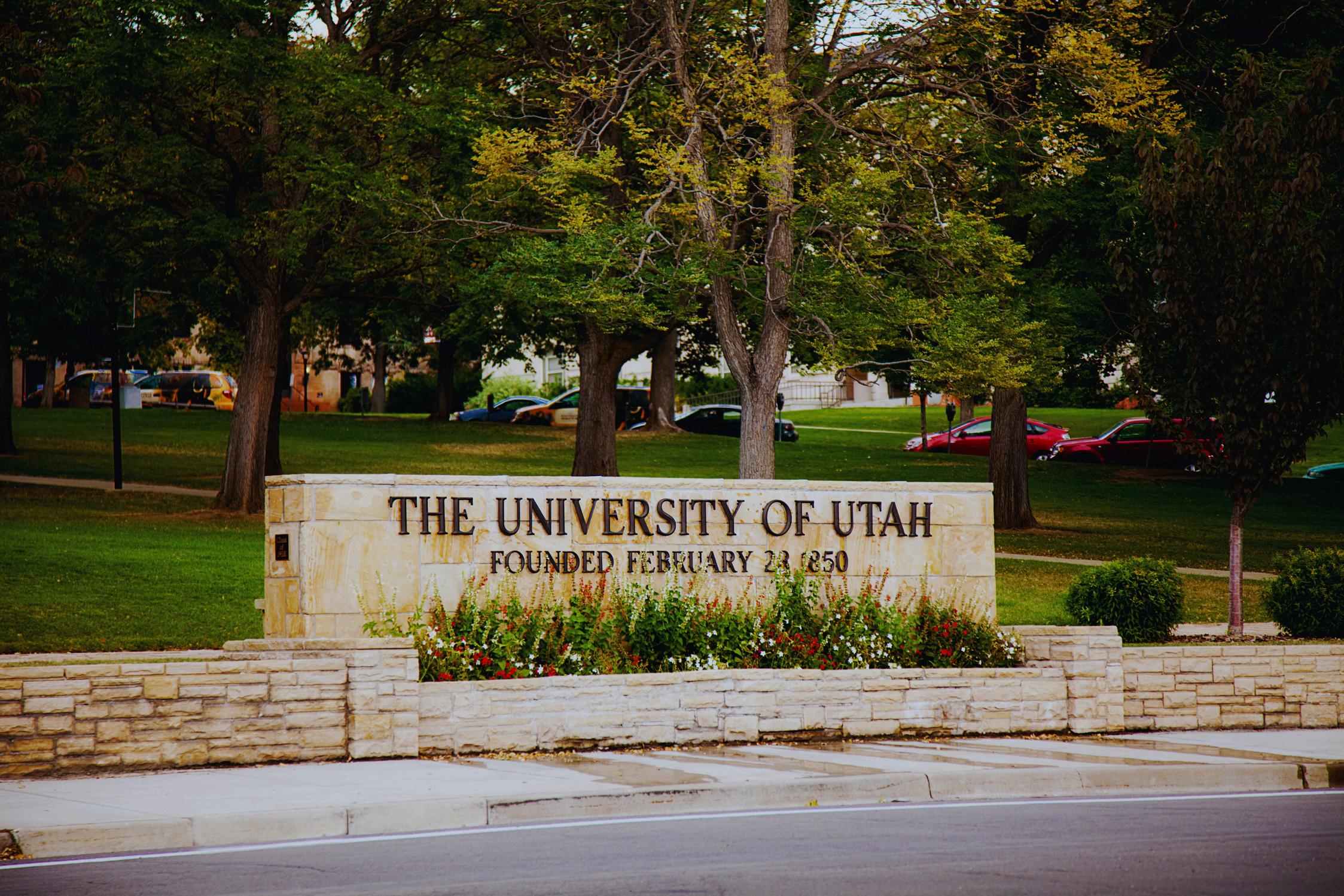
RESILIENT
ENGINEERING COURSES ENGINEERING COURSES
ANewEducationandWorkforceDevelopmentInitiativeofferedbythe UniversityofUtah.
As the energy transition unfolds, geoscience and engineering students and the existing workforce will need to be trained in the science and technology of newer energy extraction and carbon management concepts.
These concepts will be developed through five modularizedcoursesatthegraduatelevels
RenewableEnergy
This course will cover all aspects of renewables including hydrogen, wind, solar, bio-gas, geothermal, and next-generation nuclear. This recognizes Utah’s Renewable Energy corridor and highlights the University of Utah’s leadership in high and lowtemperature geothermal energy. For example, EGI’s FORGE project is a one-of-a-kind research project. It also provides an unmatched teaching and training opportunity.
CarbonCapture,Utilization,andSequestration
CCUSisencompassedbycarbonmanagement.Carbon management is becoming an important skillset for all. This course will provide a background in technical, environmental, and policy issues relevant to carbon capture, as well as CO2 utilization technologies and sequestration
PowerandEnergySystems
Complementary to exposure to carbon management concepts, the workforce should appreciate managing energy. This course will focus on energy optimization, alternative energy usage, and smart grid technologies. Studies will be introduced to cyber security considerationsrelevanttothegridandenergysecurity.
GeoscienceforEnergyTransition
Energy, mineral, water, soil and food resources are generated through complex, interacting sets of materials and processes operating at the Earth’s subsurface, land surface, oceans and the atmosphere. This course presents an in-depth understanding of Earth’s dynamic systems and substances, how geoscience techniques are employed for energy and mineral exploration and extraction, and how geoscienceskillsetsareessentialtoenergytransitionto low-carbon economies with environment-friendly and secureenergysupplies.
EnergyEntrepreneurship
The energy business landscape is changing. Startups, entrepreneurial ventures, and social consciousness are transformingaswell Thiscoursewillcoverthegrowing world of energy startups and monetization of energy technologiesincludingpolicyandsocietalissues
GEOSCIENCE FOR THE ENERGY TRANSITION
ByDr.RasoulSorkhabi
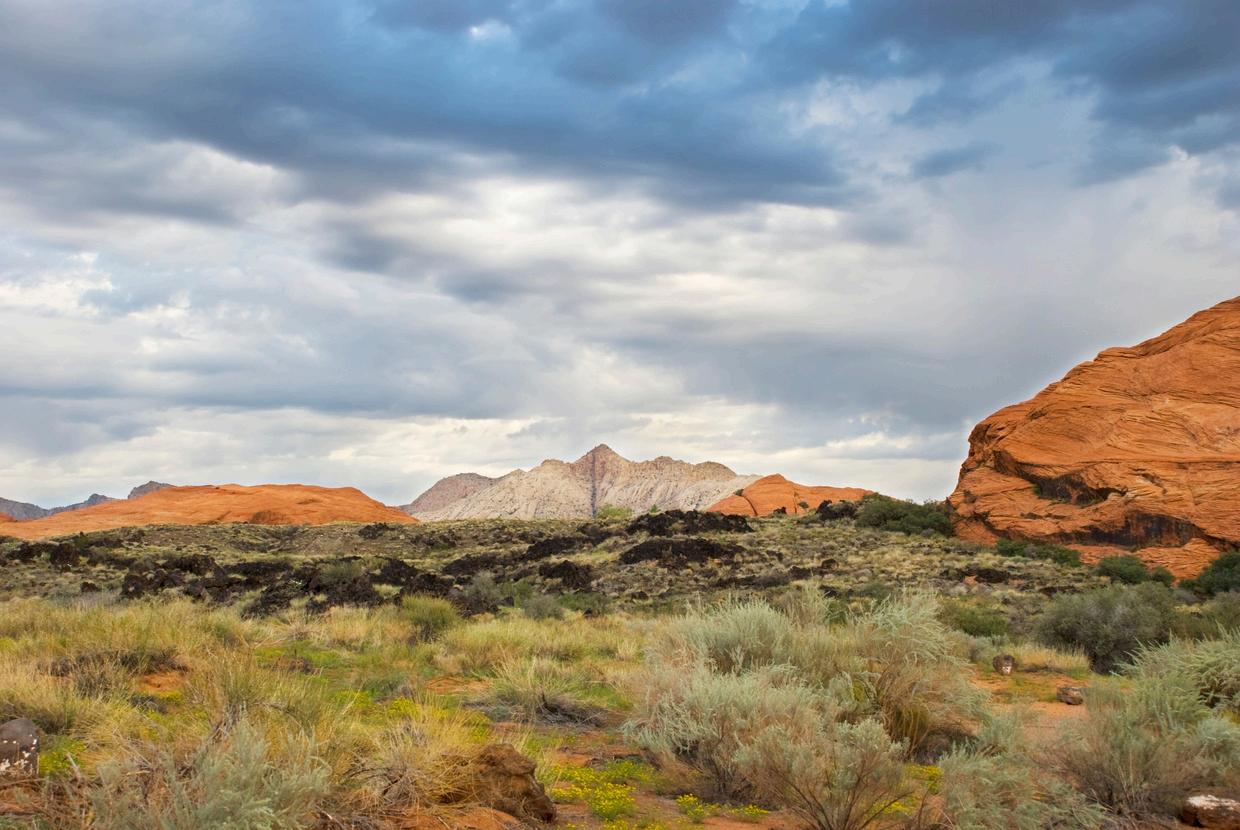
We are living in the midst of a great technological revolutioninhistory theenergytransitionfromtoday’s fossil fuel- dominated civilization to low-carbon economiesandindustries.Geoscientistswillsignificantly contributetoenergyscience,policyandtechnologiesby advancing our knowledge base of the complex interacting processes and substances in Earth’s lithosphere, oceans and atmosphere. Mapping the flow of energy in various forms and intensities in Earth systems, exploration of energy resources and minerals and evaluating the environmental impacts of energy technologies from upstream to downstream will be increasingly embedded in geoscience education, research and workforce development. This article outlines major pathways of how geoscience will contribute to various components of the energy transition.
Energytransitiontoalow-carbonworldwithsecureenergy suppliesisoneofthemosturgentandchallengingissuesof our time. Two trends are converging and propelling this energytransition
First, increased carbon dioxide in the atmosphere from the burning of fossil fuels (coal, oil and natural gas) particularly over the past century has been associated with global warming with grave environmental threats. Second, political conflicts and supply chain disruptions aremotivatingmanyindustrialcountriestodiversifytheir energy supplies and reduce their energy dependency on volatile sources Although the pace and priorities of the energy transition differ from one region to another, the global shift to low- carbon societies requires enormous know- how, research and development (R&D) and skillsets from various disciplines of science and engineering. Geoscience, as briefly described below, will playapivotalroleinthistechnologicalrevolution.
EGI’S CARBON MANAGEMENT TEAM UPDATE
Dr.TingXiaowas recentlyselectedfor FOA3014witha totalDOEfundingof $4,780,568.
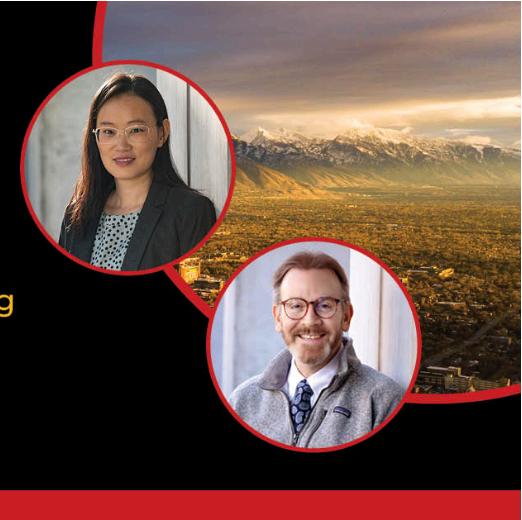
TheUinta-PiceanceBasinCarbonManagementandCommunity Engagement Partnership plans to accelerate the equitable and environmentallyresponsibledeploymentanddevelopmentofa storage-based carbon management industry in the UintaPiceance Basin in eastern Utah and western Colorado by establishingapartnershipwithextensivetechnical,managerial, regulatory, and business expertise specific to carbon transport and storage. The project team will collect and analyze existing datafromallavailablesourcestocomprehensivelyevaluatethe geologic carbon dioxide storage capacity and potential in the Uinta- Piceance Basin with advanced toolsets. Major activities include partnership development, data gathering, carbon management deployment strategy optimization by considering the unique opportunities and challenges in the Basin, data sharing, technical assistance to community stakeholders, and education resources development for the next generation workforce.
https://www.energy.gov/fecm/project-selections-foa-3014regional-initiative-technical-assistance-partnerships-ritap
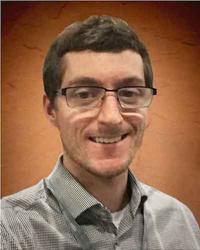
The EGI Carbon Management team welcomes Dr. Kevin McCormack as their Carbon ScienceInitiativeDirector. During histimeasaResearchScientistat EGI his expertise focused on Carbon Capture and Storage, ConventionalandUnconventional ReservoirGeomechanics,and CrustalSeismology.
EGI’sCarbonScienceInitiative
EGIconductsnumerousprojectsincarbonsequestration wherein large amounts of anthropogenic CO₂ emissions are targeted for injection into deep saline aquifers or other suitable geologic formations EGI's research portfolio on low-carbon technologies includes work in carboncapture,utilizationandstorage
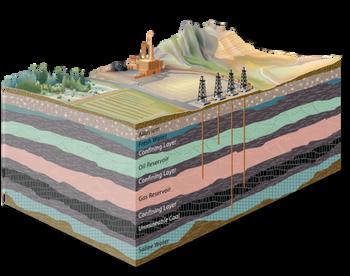
EnormousCO₂storagecapacityliesunderground.CO₂ maybecapturedfrompowerplantsandindustrial sources,andthensequesteredorusedforEOR.
Mapping minerals remotely: how hyperspectral imaging can support exploration
BY Heidi Vella Mining and Technology magazine
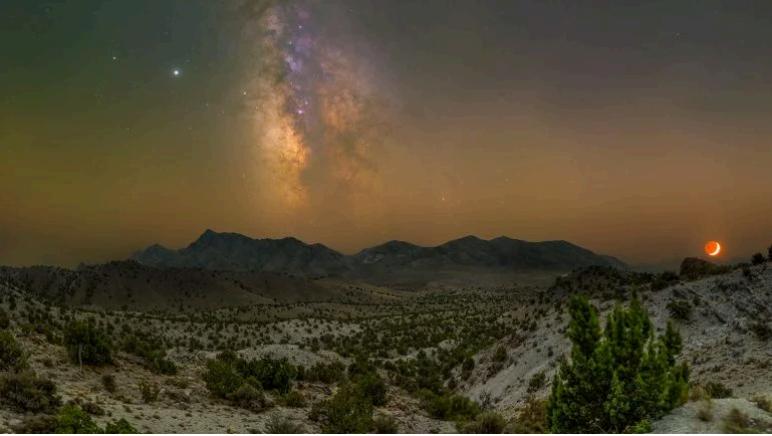
Satellites are already used in mineral exploration, but advances in technology are creating new opportunities for more sophisticated remote prospecting. Researchers in Utah are combining satellites, hyperspectral imagingandAItodiscovermineraldeposits.
Discovering new deposits of critical and rare earthmineralsisparamounttodeliveringglobal net-zero ambitions. However, finding new ore bodies is becoming more challenging due to increasingcostsandgeopoliticaltensions What is more, much of the low-hanging fruit, so to speak,hasalreadybeenexploited.
Couldtechnologicaladvanceshelpbroadenthe search and speed up the process? Dr. Bryony Richards, a senior research scientist with the Energy & Geoscience Institute at the University ofUtahintheUS,believesso Continuereading
“What we are doing is like detective work,” says Richards, who has a history working in mineral prospecting.
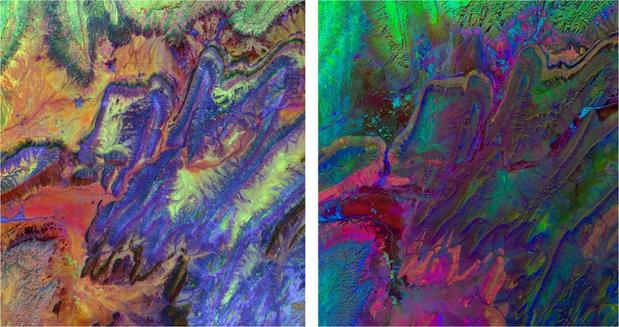
Photo: Progression of the annular eclipse over the Pinnacles of Bryce Canyon’s Claron Formation.
Researchers at the University of Utah are testing their remote prospecting technique in the Spor Mountain range. Credit: Bryony Richards.
ASTER images showing the geological structures of mountains in the Anti-Atlas range in Morocco Credit: Bryony Richards
BRIEFNEWSFROMEGI BRIEFNEWSFROMEGI
Dr.No’amDvorystartsnew projectforUtahFORGE
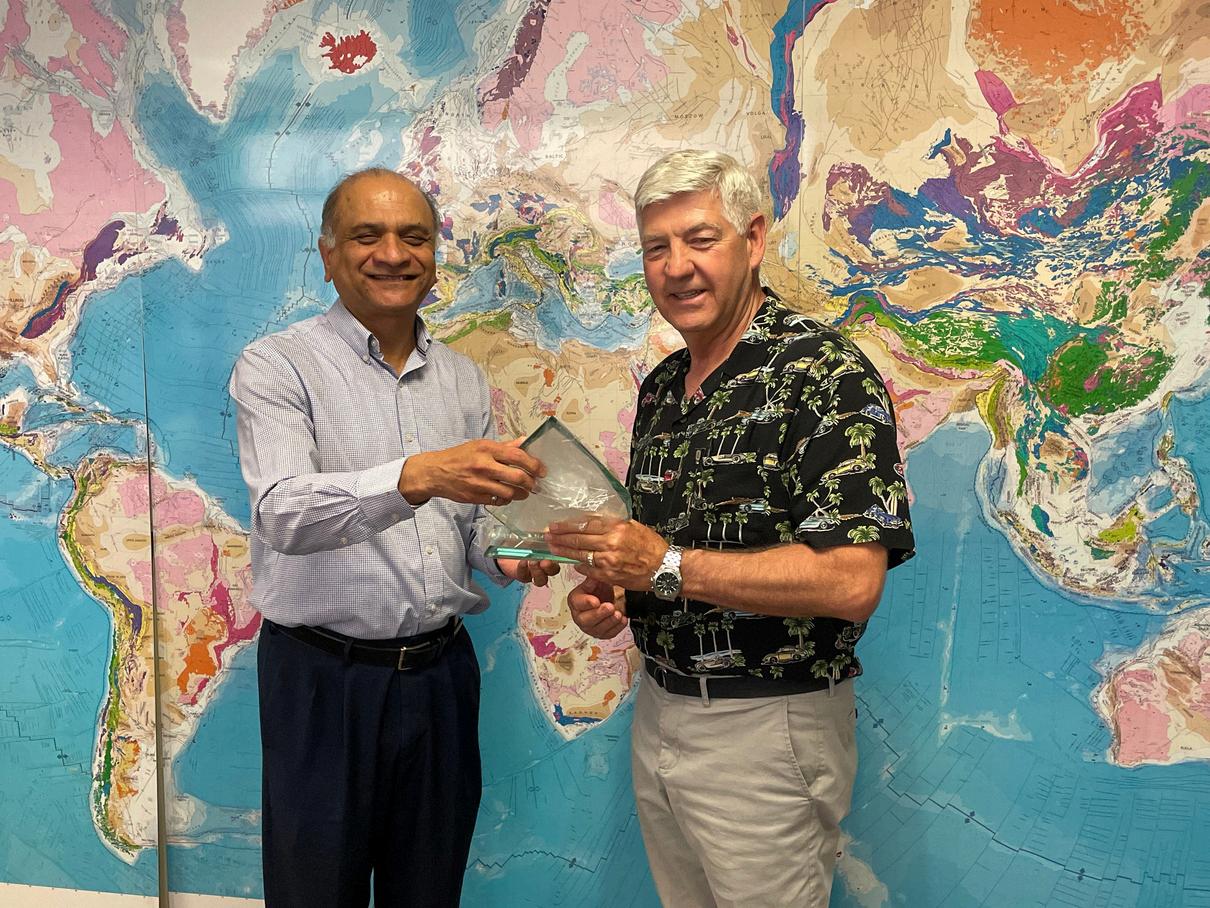
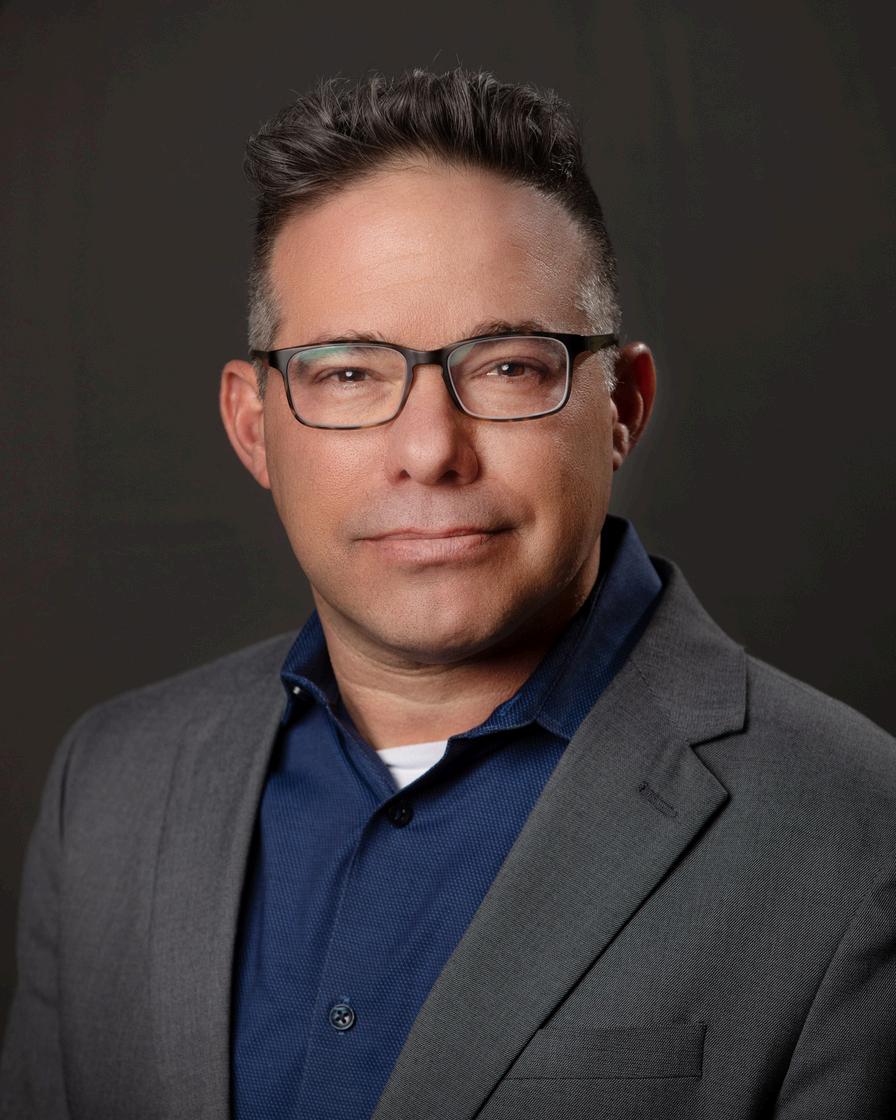
Dr. No’am Dvory recently commencedworkonaprojectatthe UtahFORGEsite,whereheservedas the Principal Investigator in collaboration with researchers from theUniversityofCalifornia,Berkeley, the University of Calgary, and Tel AvivUniversity
This project focuses on the cutting-edge application of machine learning, geomechanics, and seismology to develop real-time decision-making tools during geothermalreservoirstimulation
ThissummerEGIProjectManagerAlWalkerdecided to retire from his duties as Project Manager of the institute. In honor of his many years of service, EGI presentedhimwiththeOutstandingServiceAward.

Utah FORGE is extremely honored to have been namedtheRunnerUpintheResearchCategoryofthe Utah Business Magazine Innovation Awards! CongratulationstoJoe,theteam,andalloftheother honorees!Youcanreadaboutallthehonoreeshere.
Reservoir stimulation in geothermal energy development hasbeenknowntotriggerfeltearthquakesatvarioussites worldwide. In recent years, several advanced tools have been developed to improve earthquake source location, slip hazard estimation, maximum earthquake magnitude forecasting, and hazard prediction. However, while these tools are highly accurate, they do not yet provide a comprehensive,real-timeresourcefordecision-makingby chiefengineersandscientistsatthewellsite
To address this gap, our team is working to enhance and integrate these scientific advancements into a single, robustframeworkthatwillestablishareal-timeriskstatus, serving as the basis for seismic hazard management and mitigation. Specifically, we will 1) improve existing machine-learning techniques for seismic event location and magnitude estimation; 2) enhance fault slip assessments with Bayesian uncertainty analysis; 3) integratethreemaximummagnitudepredictiontools;and 4) upgrade current damage and nuisance models to accountforreal-timeparameterdistributions.
Theculminationoftheseeffortswillbeaninteractivetool that continuously provides the stimulation team with actionable insights to reduce operational risks and increase stimulation effectiveness While we anticipate a lowpotentialforfeltseismiceventsattheUtahFORGEsite, the development of these technologies is critical for advancingenhancedgeothermalsystemsglobally.Weare excited to begin work on this practical, sustainable, and potentiallylife-savingtool.
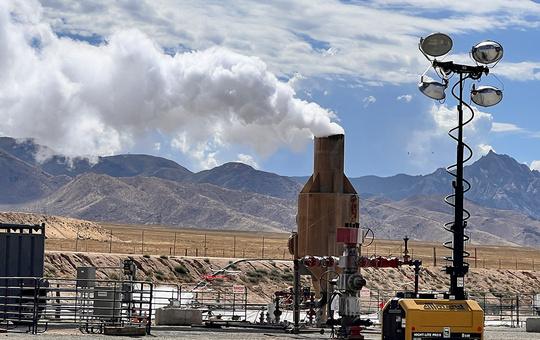
UtahFORGEExtendedFour
MoreYears
An agreement has been signed between the U.S. Department of Energy and the Utah Frontier Observatory forResearchinGeothermalEnergy(FORGE)tocontinuethe projectthrough2028.Theagreementincludesanadditional $80 million in funding over the next four years. The extension begins October 1 and will allow Utah FORGE to build on the significant breakthroughs that have been realizedsincetheprogramstarted.
ManagingPrincipalInvestigatorDr.JosephMooresaid:“We aregratefultotheDOEfortheiron-goingcommitmentand support of Enhanced Geothermal Systems (EGS) research This next phase allows us to build on our important achievements and to further develop and de-risk the tools andtechnologiesnecessarytounlockthepotentialofnextgenerationgeothermalpower”
Utah FORGE is managed by a team at the Energy & Geoscience Institute, part of the University of Utah’s John andMarciaPriceCollegeofEngineering.
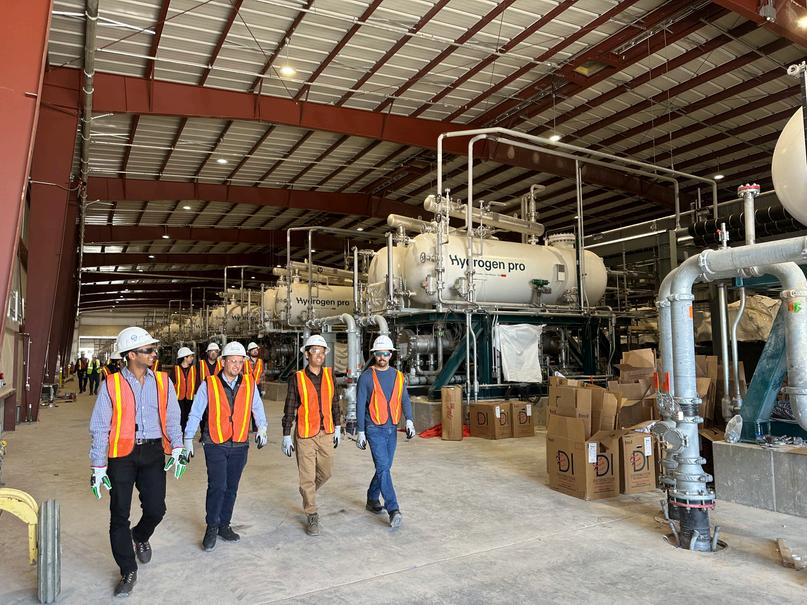
FieldtriptoMilford
InMay,EGItookasmallgrouponafieldtriptoACESDELTA.
ACES DELTA is the world’s largest green hydrogen storage facilitybeingdevelopedinMilford,Utahwithfundingfrom the U.S. Department of Energy’s (DOE) Loan Programs Office which will help scale low-carbon energy for western states. It is a joint venture between Chevron U.S.A. and MitsubishiPower,withChevronasamajorityowner.
While there, the group met with geologist Becky Robinson and viewed drone footage along with solution-mining animations ThetourincludedalookatElectrolyzers,water treatment,nitrogen,andcoolingtowers
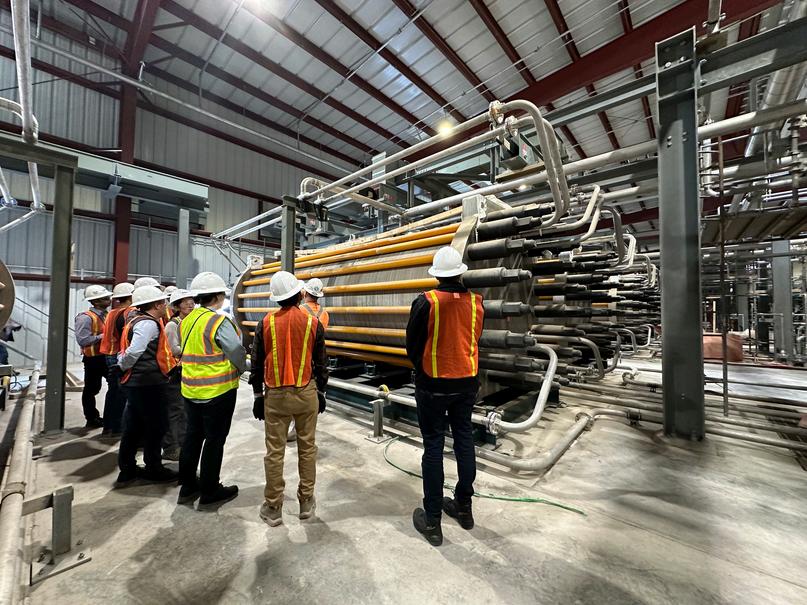
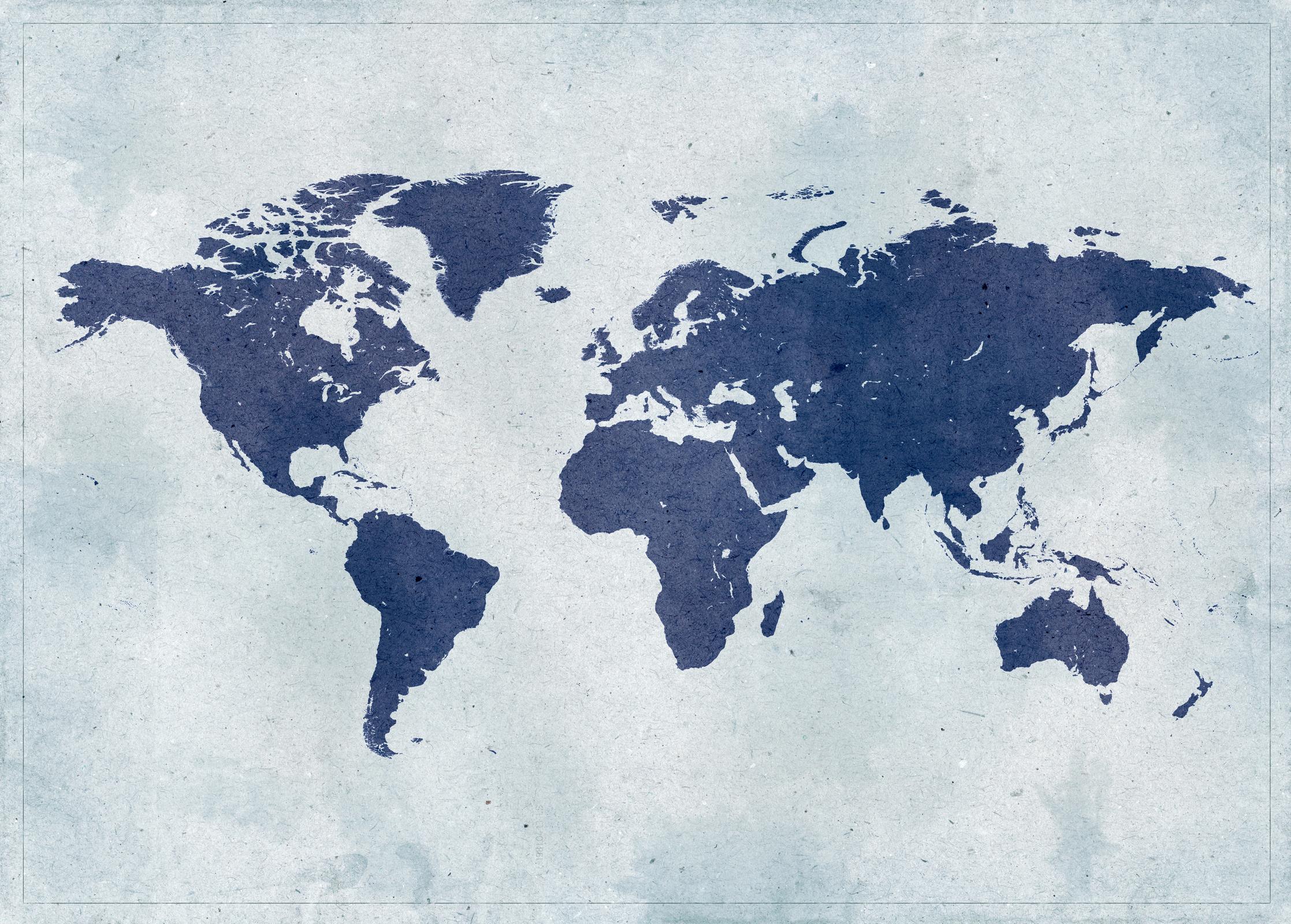
NATURAL HYDROGEN
Naturalhydrogen,alsoknownasgeologic,native,gold,andwhite hydrogen,isaprimaryenergysourcewithvastpotential.

BryonyRichards,Ph.D. BryonyRichards,Ph.D.
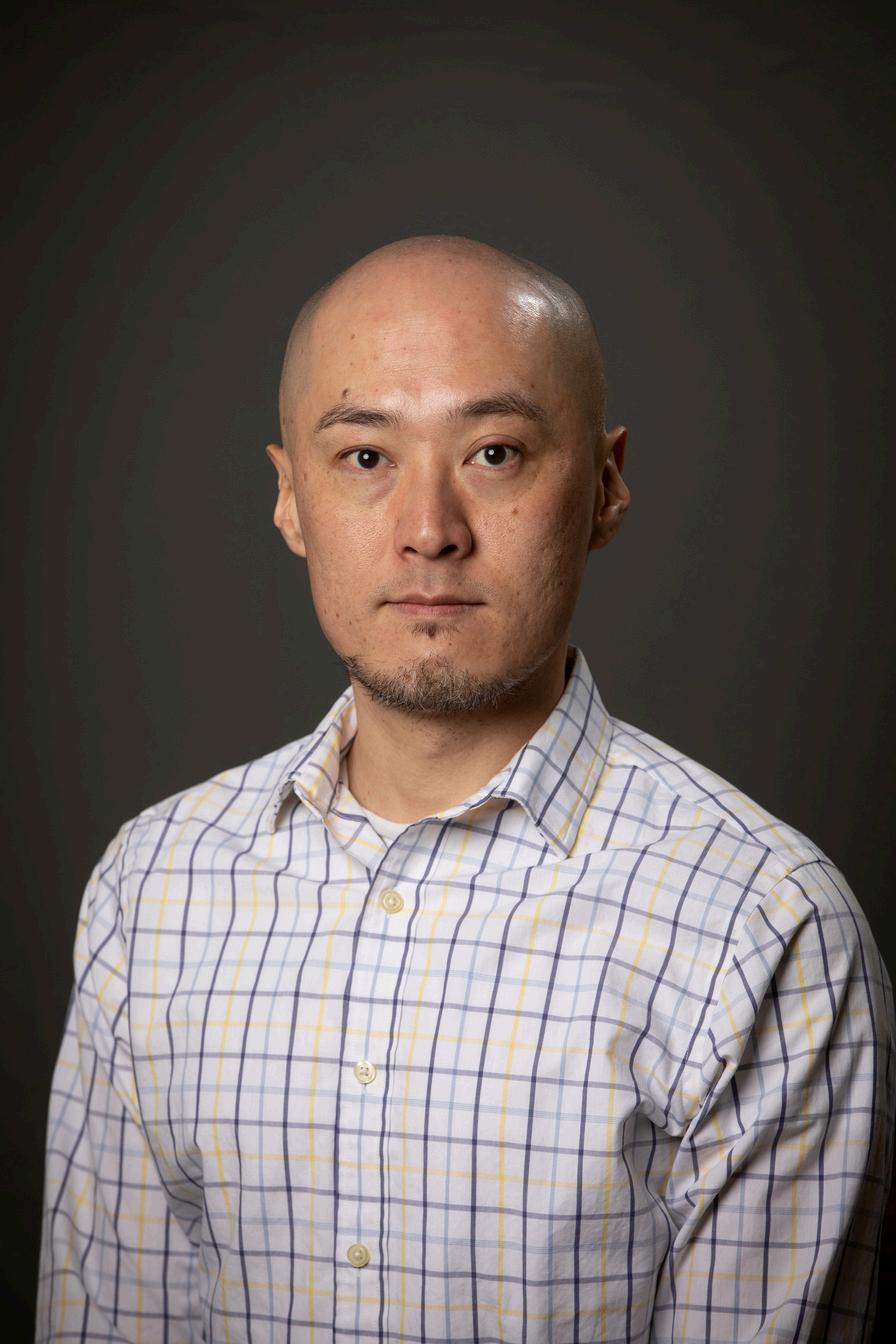
Natural hydrogen, also known as geologic, native, gold,andwhitehydrogen,isaprimaryenergysource with the potential to feed a future society with increasing hydrogen demand. Its multiple generation processes hint at a wide geographic distribution of generation potential, which can supply low-emission energy to off-grid communities and supplement existingrenewableenergysources.
The Natural Hydrogen Knowledge Platform is for forward-thinking energy companies and academic researchers who are tackling the challenge of efficientlyidentifyingandutilizingthisemergingclean energy source Setting itself apart from traditional databasesormappingsolutions,theplatformoffersa dynamic,comprehensive,andinterconnectedviewof global natural hydrogen systems facilitating smarter explorationstrategiesandfosteringinnovativeenergy solutionsintherenewablesector.
OBJECTIVES
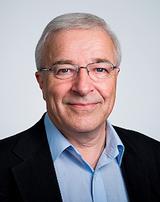
Tocaptureandorganizetheever-increasing informationanddataonnaturalH₂. Toidentifykeygeologicalfeaturesforthe generationofH₂andeconomicaccumulations. Toidentifyknowledgegapsinordertofacilitate newresearch.
Tobetterunderstandthefeasibilityandrisksof naturalH₂explorationandexploitation
EiichiSetoyama,Ph.D.|esetoyama@egi.utah.edu (801)585-9768|egi.utah.edu
AstorymapbytheEGIresearch teamabovehasbeenmade available.
Youmayviewithere
EiichiSetoyama,Ph.D. TonyDoré,Ph.D.
UPCOMING EGI WEBINARS FOR FALL 2024

DISCUSSIONS AND INSIGHT FROM EGI
OCTOBER 10, 2024
DEMYSTIFYING HIDDEN HYDROGENWHAT WE KNOW (AND DON'T KNOW) ABOUT NATURAL HYDROGEN
WITH EIICHI SETOYAMA, PH D | 8 AM MST

RESEARCH SCIENTIST Eiichi Setoyama, Ph.D.
NOVEMBER 7, 2024
ENERGY AND DECARBONIZATION: ASSESSMENT OF LOW-CARBON TECHNOLOGIES
WITH MILIND DEO, PH D | 9:00 AM MST
REGISTER REGISTER
For more info and registration visit: egi.utah.edu/fall-webinar-lineup
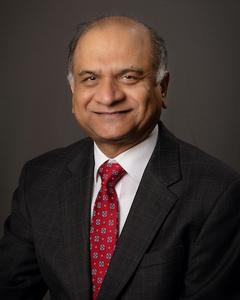
PROFESSOR, CHEMICAL ENGINEERING – EGI DIRECTOR Milind Deo, Ph.D.
GUYANA - SURINAME BASINS GUYANA - SURINAME BASINS DATABASE DATABASE
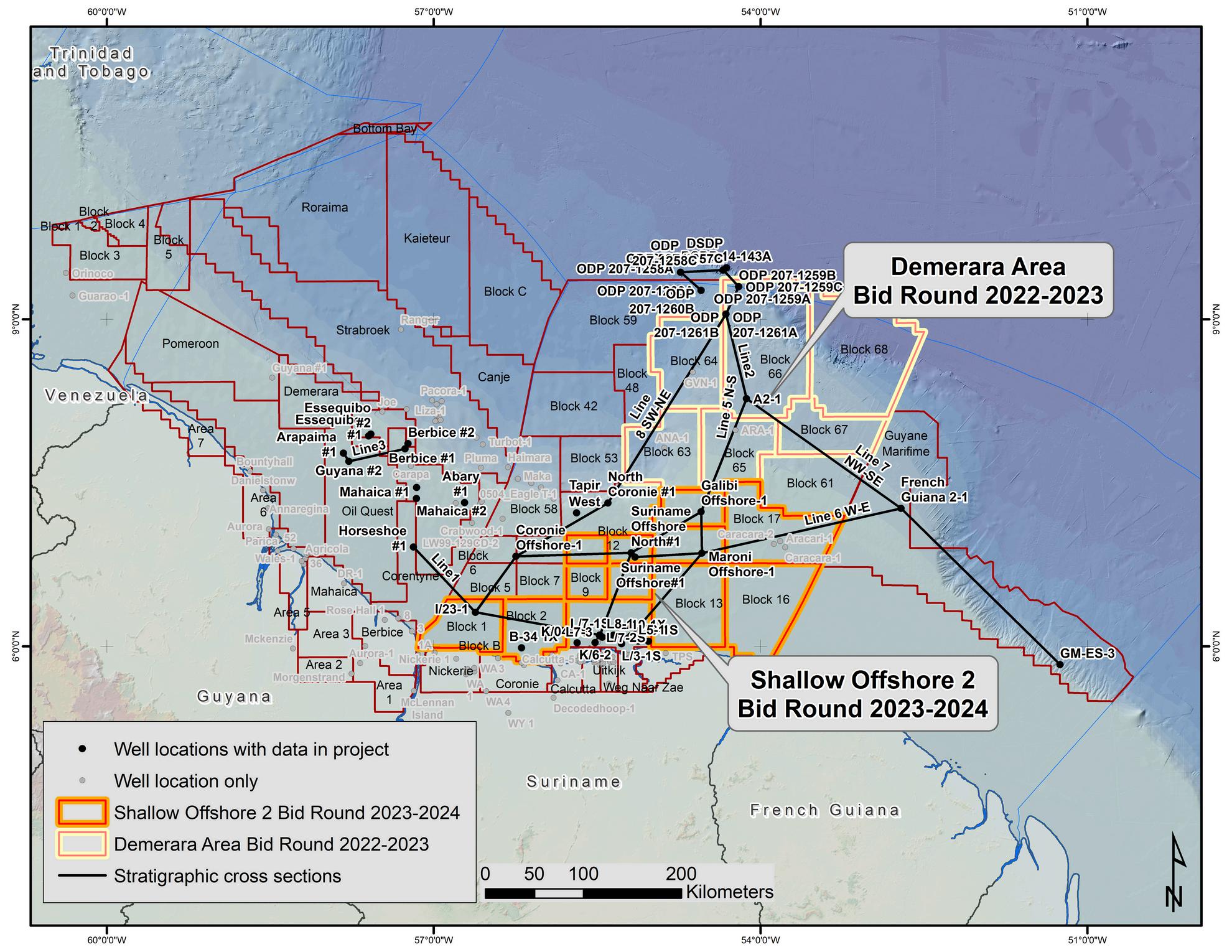
Exploration activities in offshore Guyana, Suriname, and French Guiana
Rasoul Sorkhabi, Ph D | Eiichi Setoyama, Ph D | Christopher Kesler
Recent discoveries offshore Guyana-Suriname have placed this petroleum province in the spotlight. These discoveries indicate massive occurrent of oil and gas in the region and the need for regional synthesis and quantitative geologicandgeochemicaldataonpetroleumsystemsforfurtherexploration.
ThisEGIstudyreportisdesignedto:
(1)IntegrateallofdatafromEGIreportsaswellasresearchpapersinacoherent schema.
(2)Compilegeochemicaldataandaddnewgeochemicalanalysesonselect samples
(3)Constructnewpaleofaciesmapsforkeystratigraphichorizonsfromonshore todeepwater.
(4)Constructlitho-chrono-bio-stratigraphiccolumnsforthewells
(5)Assemblestructuralandgeophysicaldataonaunified,easy-to-useplatform.
KEY DELIVERABLES
ArcGIS integration and display of stratigraphic, geochemical, and well data and maps, including access to publiclyavailable seismic images.
Characterization of the offshore petroleum systems in the region by new geochemical and paleofacies data.
The study report is delivered on the ArcGIS platform. Rasoul Sorkhabi, Ph.D. | rsorkhabi@egiwpadmin | 801-581-5126
RECENT EGI SCIENTISTS'
Dvory,N.Z.,McLennan,J.D.(2024).StressFieldDynamicsandFaultSlipPotentialintheParadoxBasin.JGRSolid Earth,129(7),(July2024)e2024JB028891
Fei,F.,Wang,C.,Cusini,M.,Frash,L.,Kroll.K.,(2024).ModelingofDiagnosticFractureInjectionTests(DFITs)forInsituStressCharacterizationintheUtahFORGEReservoir.StanfordGeothermalWorkshop
Finnila,A.,Jones,C.(2024).UpdatedReferenceDiscreteFractureNetworkModelatUtahFORGE.Stanford GeothermalWorkshop
Fu,W.,Damjanac,B.,Radakovic-Guzina,Z.,Finnila,A.,Podgorney,R.,Mclennan,J.(2024).Near-WellboreDEM ModelofHydraulicFractureInitiationforUtahFORGE.StanfordGeothermalWorkshop
Ghassemi,A,Ye,Z,Ratnayake,M (2024) TheRoleofThermo-poroelasticEffectsonTransverseFracturesinthe UtahFORGEWell16-A StanfordGeothermalWorkshop
Iyare,U,Frash,L,Bijay,KC,Meng,M,Kroll,K,Smith,M,Davila,G,Carey,J,Li,W,Marina,O,Madenova Y, (2024).MeasurementsofThermo-Hydro-Mechanical-ChemicalCouplinginGraniteShearFracturesatFORGEUsing theTriaxialDirect-ShearTestMethod.StanfordGeothermalWorkshop
Jones,C.,Simmons,S.,Moore,J.(2024).GeologyoftheUtahFrontierObservatoryforResearchinGeothermal Energy(FORGE)EnhancedGeothermalSystem(EGS)Site.Geothermics,Vol.122,103054,ISSN0375-6505
Kumawat,P.,Zhouc,H.,Kitzd,K.,McLennana,J.,Powella,K.,Deo,M.,Panjaa,P.(2024).Sensitivityanalysisof boreholethermalenergystorage(BTES):examiningkeyfactorsforsystemoptimization.EnergyStorageand Savings,3,218230,https://doi.org/10.1016/j.enss.2024.04.003
Lee,S.,Ghassemi,A.,Ajo-Franklin,J.,Becker,M.(2024).NumericalModelingofStimulationandCirculationinUtah FORGEWells.StanfordGeothermalWorkshop
McClure,M,Irvin,R,England,K,McLennan,J (2024) NumericalModelingofHydraulicStimulationandLongTermFluidCirculationattheUtahFORGEProject StanfordGeothermalWorkshop
Munday,L.,Podgorney,R.(2024).NumericallyTestingConceptualModelsoftheUtahFORGEReservoirUsingJuly 2024CirculationTestData.StanfordGeothermalWorkshop
Moodie,N.,McPherson,B.(2024).Anintegratedapproachtoderiverelativepermeabilityfromcapillarypressure. ComputationalGeosciences,1-16.rdcu.be/dLy2Z
Niemz,P.,McLennan,J.,Pankow,K.,Rutledge,J.,England,K.(2024).CirculationexperimentsatUtahFORGE:Nearsurfaceseismicmonitoringrevealsfracturegrowthaftershut-in.GeothermicsVol.119,102947,ISSN0375-6505
Panja,P.,Deo,D.,Powell,K.,Green,S.,McLennan,J.(2024).OperationalStrategiesandWellDesignforReservoir ThermalEnergyStorage(RTES), Geoenergy,doi.org/10.1144/geoenergy2024-008
Panja,P.,Vega-Ortiz,C.,Deo,D.,McPherson,B.,Sorkhabi,R.(2024).StatisticalAnalysisofEstimatedUltimate Recovery:ComparingMachineLearningandTraditionalDCAMethodsinEagleFordandBakken,URTEC-4049496MS,SPE/AAPG/SEGUnconventionalResourcesTechnologyConference,Houston,Texas,17-19June, doiorg/1015530/urtec-2024-4049496
Panja,P,Edelman,E,Vega-Ortiz,C,Deo,M,Sorkhabi,R (2024) UnderstandingHydrogenFlowinDepleted NaturalGasReservoirs,58thUS RockMechanics/GeomechanicsSymposium,Golden,Colorado,USA,23-26June
Panja,P.,Jia,W.,Nelson,A.,McPherson,B.(2024).Applicationofconvolutionallongshort-termmemoryfor spatio-temporalforecastingsofhydrocarbonsaturationsandpressureinoilfields.PetroleumScienceand Technology,doi.org/10.1080/10916466.2024.2400303
Radakovic-Guzina,Z.,Damjanac,B.,Fu,W.,Finnila,A.,Podgorney,R.,Mclennan,J.(2024).CoupledHydroMechanicalBack-AnalysisofCirculationProgramatFORGEinJuly2023.StanfordGeothermalWorkshop
Rose,P,Mclennan,J,Jones,C,Simmons,S,England,K (2024) TracerTestinginWell16B-32attheUtah FORGEEGSProject StanfordGeothermalWorkshop
Sausan,S,Hartung,M,Su,J,Schneider,M,Wright,A,Horne,R (2024) UpdatesoftheDevelopmentof Chloride-basedWirelineToolforMeasuringFeedZoneInflowinEnhancedGeothermalSystems(EGS).Stanford GeothermalWorkshop
Simmons,S.,Jones,C.,Kirby,S.,Wannamaker,P.,Pankow,K.,Moore,J.(2024).TheInterplayofImpermeable CrystallineBasementRocks,TectonicFracturingandMagmaticIntrusionintheDevelopmentofGeothermal ResourcesatUtahFORGEandRooseveltHotSprings.StanfordGeothermalWorkshop
Sorkhabi,R.(2024).GeoscienceforEnergyTransition. Geology Today,40(2)(March–April),63-71.
Sorkhabi,Rasoul(2024).GeoscienceEducation,ResearchandCareers:Towardsnewroadmaps. The Professional Geologist,61(1)(Jan-March),40-44.
Sorkhabi,Rasoul(2024) ArchibaldGeikie’sFieldTriptotheRockyMountainsin1879 Outcrop (Rocky Mountain Association of Geologists),73(8)(August),16-25
Vega-Ortiz,C.,(2024)CCSinContinentalShelfGulfofMéxico,Tamaulipas,México(CMP2024 507).México PetroleumCongress,Tampico.(June2024)
Vega-Ortiz,C.,(2024)CCSprospectivesitesinMéxico.InstitutionalResearchSeminary.InstitutoMexicanodel Petroleo,MéxicoCity.(June2024)
Vega-Ortiz,C,(2024)ChallengesandcurrentstateinregulationsforCCSinMexico GraduateResearchSeminar InstitutoPolitecnicoNacional,SchoolofCivilEngineeringandEarthSciences MexicoCity (June2024)
Vega-Ortiz,C,Panja,P,Edelman,E,McPherson,B (2024)Analysisofmachinelearningmodelsforpredictionof petrophysicaldata,58thU.S.RockMechanics/GeomechanicsSymposium,Golden,Colorado,USA,23-26June
Velasquez,A.,Velazco,A.,Escobar,J.,Abid,K.,Esquitin,Y.,Vasques,R.,RochaDeQueiroz,L.,Teodoriu,C.(2024) DesignandExperimentalValidationofaUniqueGeothermalDownholeValveforFORGEProject.Stanford GeothermalWorkshop
Xing,P.,Moore,J.,Damjanac,B.,McLennan,J.(2024)InvestigationofThermalCoolingEffectofLong-Term CirculationinRaftRiverEnhancedGeothermalSystem. Geothermics,120,103026.
Xing,P., England, K., Moore,J.,Podgorney, P.,McLennan,J.(2024)AnalysisofCirculationTestsandWell ConnectionsattheUtahFORGE.StanfordGeothermalWorkshop
Xing,P.,McCormack,K.,Edelman,E.,List,D.,Maxwell,G.,andMcLennan,J.(2024,June).WellboreStability AnalysisofWellsinParadoxPlayinSoutheasternUtah:InvestigatingtheImpactofSaltMobility Paperpresented at58thUSRockMechanics/GeomechanicsSymposium(ARMA-2024),Golden,Colorado
Ye,Z,Ghassemi,A,(2024)TheUpdatedWellboreStressModelsforUtahFORGE StanfordGeothermalWorkshop

